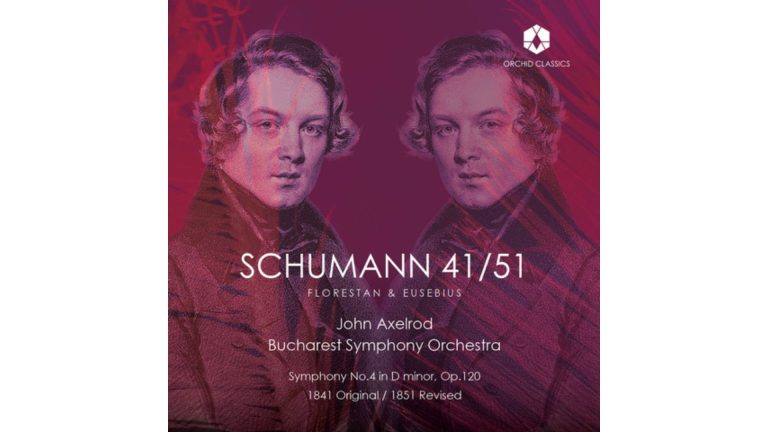Schumann’s Fourth Symphony in the original version of 1841 and the revised version of 1851: these are, according to the booklet, Florestan the Savage on the one hand and Eusebius the Mild on the other.
Common to both versions is the romantic spirit that characterizes the music and which John Axelrod uninhibitedly emphasizes, as he did years ago in his Brahms recordings.
He also has the Bucharest Symphony Orchestra play with extreme detail and a lot of color, so that the first version, for all its wildness (which never shows itself in fast tempos but rather in its musical drama), remains above all expressive music. Where other conductors use tempo and volume to portray musical events, Axelrod is the clever and spontaneous administrator who flexibly shapes his orchestral sound with the greatest possible transparency, where nothing is smooth but everything sprouts lushly. The orchestra follows him willingly and with playful verve.
The contrast with the 1851 version is all the more striking. Not that Eusebius sprinkled camphor over the score, but the difference lies primarily „in the depths of his emotional despair,” as John Axelrod points out in the libretto.
And so we hear a very different Fourth Symphony, the one Clara Schumann preferred, while Johannes Brahms clearly preferred the first version.
Now let it not be assumed that John Axelrod used the fatter orchestration to produce a more subdued sound. No, with plenty of energy and an outstanding sense of rubato and dynamics, he expresses the drama of the music well here, too. And at around 30 minutes, he’s not even that slow (compared to, say, his mentor Bernstein, who took nearly 34 minutes in his Vienna recording). Axelrod is more lyrical, more soulful in the second version, but in seeking the underlying drama and somber sounds, his alert sense of detail and color has not diminished.
The two interpretations, then, are perfect renditions of what the booklet penned by John Axelrod says: « While much of his music and writings reflect his bi-polar condition, these two publications, one written during a manic creative year and the other in the depths of his emotional despair, provide for me the most telling representation of this radical romantic. »
(Via Pizzicato)











